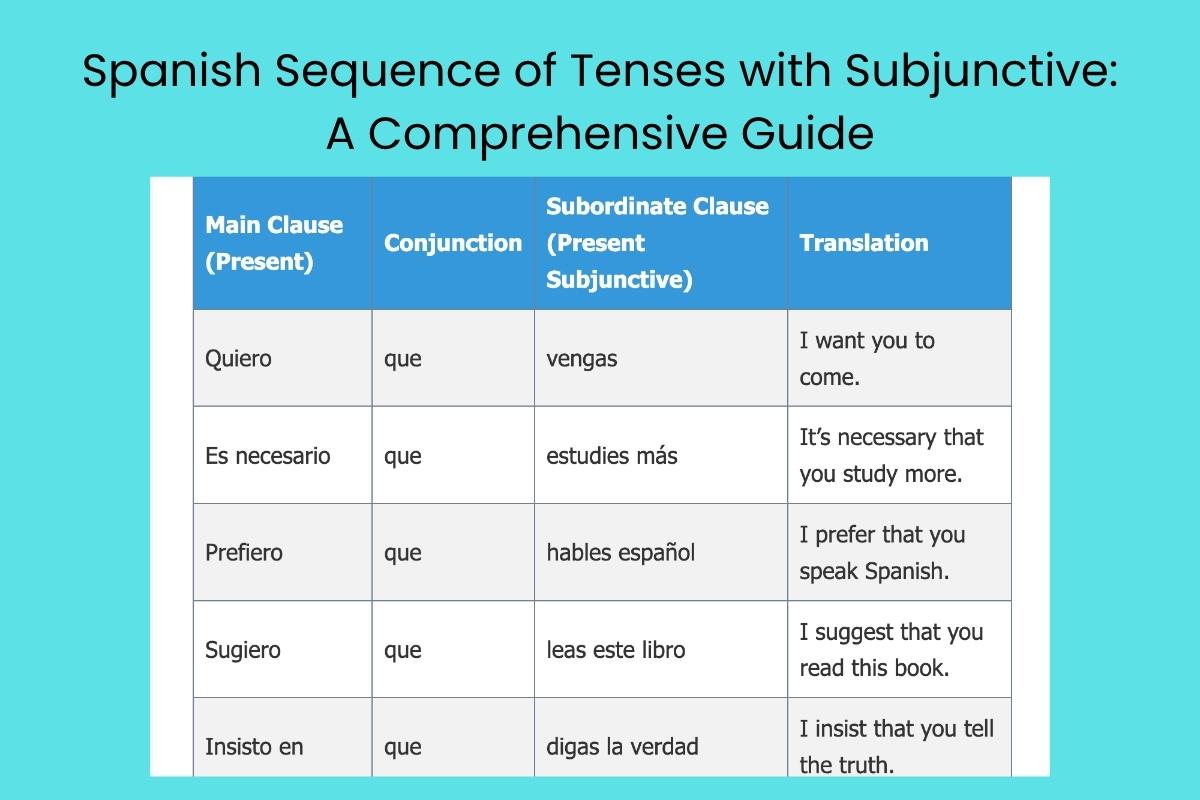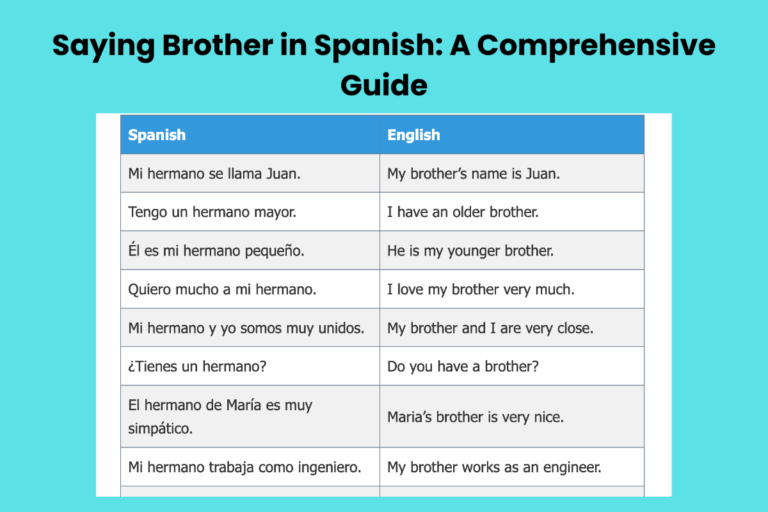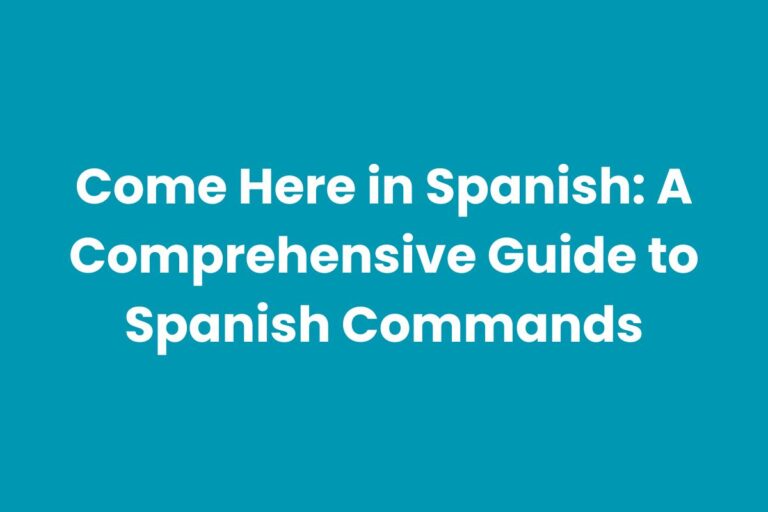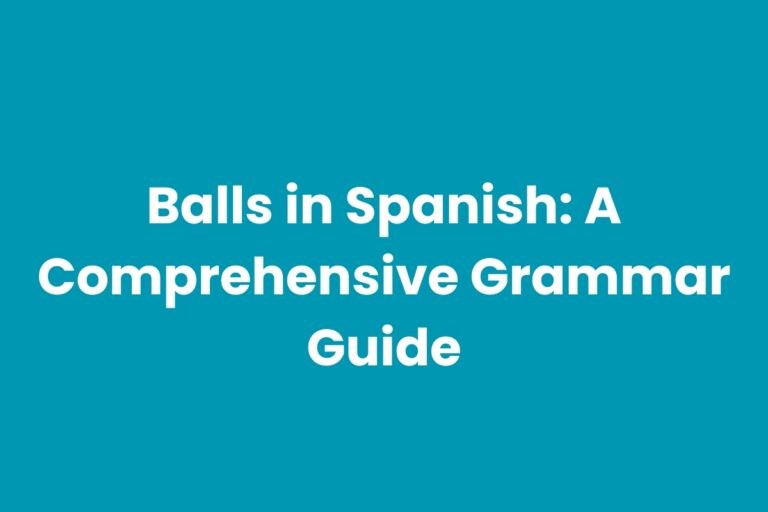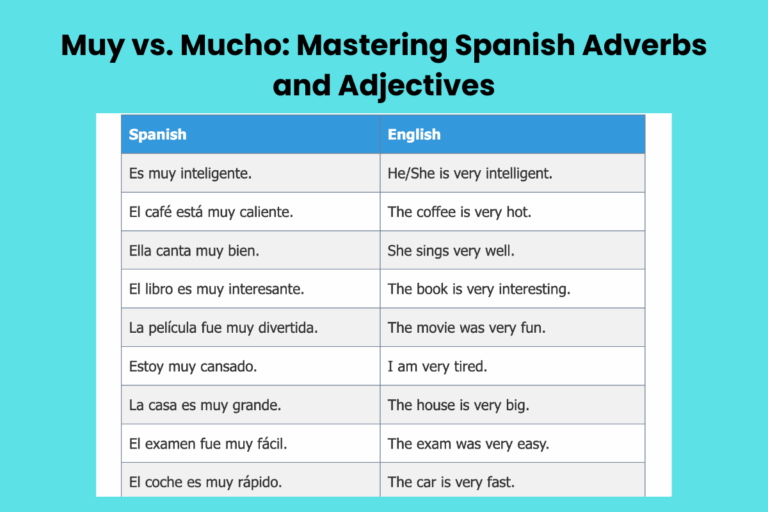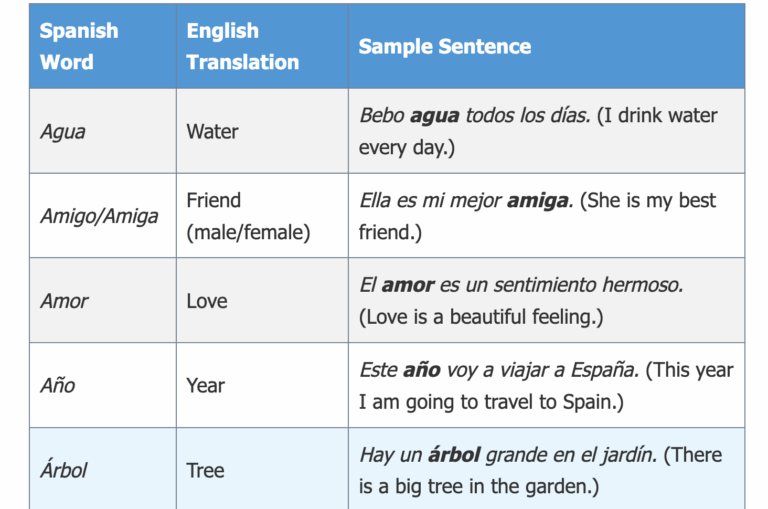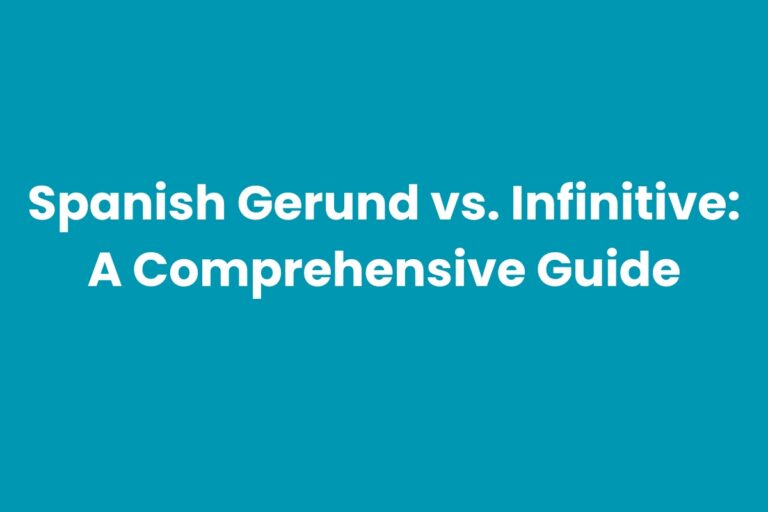Spanish Sequence of Tenses with Subjunctive: A Comprehensive Guide
Mastering the Spanish sequence of tenses with the subjunctive mood is crucial for expressing complex ideas and nuanced meanings. This grammatical concept governs how verb tenses in subordinate clauses relate to the main clause, particularly when the subjunctive mood is involved.
Understanding this topic allows you to construct grammatically correct and sophisticated sentences, avoiding common errors that can lead to miscommunication. This guide is designed for intermediate to advanced Spanish learners who want to refine their grammar skills and achieve fluency in both written and spoken Spanish.
By delving into the rules, examples, and practice exercises provided, you will gain confidence in using the subjunctive mood and mastering the sequence of tenses.
Table of Contents
- Definition of Spanish Sequence of Tenses with Subjunctive
- Structural Breakdown
- Types or Categories
- Examples
- Usage Rules
- Common Mistakes
- Practice Exercises
- Advanced Topics
- FAQ
- Conclusion
Definition of Spanish Sequence of Tenses with Subjunctive
The Spanish sequence of tenses (consecutio temporum) dictates how the tense of the verb in a subordinate clause relates to the tense of the verb in the main clause, especially when the subordinate clause requires the subjunctive mood. The subjunctive mood is used to express doubt, desire, emotion, uncertainty, or hypothetical situations. It is essential to understand the correct sequence of tenses to ensure grammatical accuracy and clarity in complex sentences.
In essence, the sequence of tenses ensures that the verb tenses in a sentence align logically, reflecting the timing and relationship between actions or states. When the main clause is in the present, future, or present perfect tense, the subjunctive in the subordinate clause can generally be in the present subjunctive or present perfect subjunctive.
However, when the main clause is in the past tense (preterite, imperfect, past perfect, or conditional), the subjunctive in the subordinate clause is usually in the imperfect subjunctive or past perfect subjunctive.
The function of the sequence of tenses is to provide a framework for constructing complex sentences where the subjunctive mood is necessary. The context dictates which tense of the subjunctive is appropriate, based on the tense of the main verb and the relationship between the actions or states being described.
Without a proper understanding of this grammatical construct, sentences can become confusing, illogical, and grammatically incorrect.
Classification
The sequence of tenses can be classified based on the tense of the main verb:
- Present/Future/Present Perfect Main Clause: Followed by Present Subjunctive or Present Perfect Subjunctive.
- Past/Conditional Main Clause: Followed by Imperfect Subjunctive or Past Perfect Subjunctive.
Function
The function of the sequence of tenses is to:
- Maintain grammatical correctness.
- Clarify the relationship between actions in complex sentences.
- Accurately convey the intended meaning.
Contexts
The sequence of tenses is crucial in contexts involving:
- Expressions of desires, wishes, and hopes.
- Statements of doubt, uncertainty, or disbelief.
- Emotional reactions.
- Impersonal expressions.
- Clauses introduced by conjunctions that require the subjunctive (e.g., para que, a menos que, antes de que).
Structural Breakdown
The structural breakdown of the Spanish sequence of tenses with the subjunctive involves understanding the relationship between the main clause and the subordinate clause. The main clause sets the tense, and the subordinate clause, introduced by a conjunction like que, adapts its tense accordingly.
The basic structure is as follows:
Main Clause (Indicative) + que + Subordinate Clause (Subjunctive)
The tense of the verb in the main clause determines the possible tenses of the subjunctive verb in the subordinate clause. Here’s a more detailed breakdown:
- Present Main Clause: The subordinate clause typically uses the present subjunctive to express actions happening at the same time or in the future.
Ejemplo: Quiero que vengas mañana. (I want you to come tomorrow.)
- Future Main Clause: Similar to the present, the future main clause is followed by the present subjunctive.
Ejemplo: Esperaré hasta que llegues. (I will wait until you arrive.)
- Present Perfect Main Clause: This also generally takes the present subjunctive.
Ejemplo: He insistido en que hables con él. (I have insisted that you speak with him.)
- Past Main Clause: Here, the subordinate clause uses the imperfect subjunctive to express actions happening at the same time or later than the main clause action.
Ejemplo: Quería que vinieras ayer. (I wanted you to come yesterday.)
- Conditional Main Clause: Similar to the past, the conditional main clause is followed by the imperfect subjunctive.
Ejemplo: Querría que vinieras mañana. (I would want you to come tomorrow.)
The past perfect subjunctive is used when the action in the subordinate clause happened before the action in the main clause.
Ejemplo: Dudaba que hubieras terminado el trabajo. (I doubted that you had finished the work.)
Types or Categories
The sequence of tenses with the subjunctive can be categorized based on the tense of the main clause and the resulting subjunctive tense in the subordinate clause. Here are the primary categories:
Present, Future, and Present Perfect Main Clauses
When the main clause is in the present, future, or present perfect tense, the subordinate clause uses the present subjunctive or the present perfect subjunctive. The present subjunctive is used for actions happening at the same time or in the future relative to the main clause.
The present perfect subjunctive is used for actions that have already happened before the main clause action.
Examples:
- Present: Es importante que estudies. (It’s important that you study.)
- Future: Te llamaré cuando tengas tiempo. (I will call you when you have time.)
- Present Perfect: Me alegro de que hayas venido. (I’m glad that you have come.)
Past and Conditional Main Clauses
When the main clause is in a past tense (preterite, imperfect, past perfect) or the conditional tense, the subordinate clause uses the imperfect subjunctive or the past perfect subjunctive. The imperfect subjunctive is used for actions happening at the same time or later than the main clause action.
The past perfect subjunctive is used for actions that happened before the main clause action.
Examples:
- Preterite: Quise que vinieras. (I wanted you to come.)
- Imperfect: Quería que vinieras. (I wanted you to come.)
- Past Perfect: Había esperado que hubieras llamado. (I had hoped that you had called.)
- Conditional: Me gustaría que estuvieras aquí. (I would like you to be here.)
Examples
Here are extensive examples organized by the tense of the main clause, illustrating the proper sequence of tenses with the subjunctive.
Present Subjunctive Examples
The following table provides examples where the main clause is in the present tense, followed by a subordinate clause requiring the present subjunctive.
| Main Clause (Present) | Conjunction | Subordinate Clause (Present Subjunctive) | Translation |
|---|---|---|---|
| Quiero | que | vengas | I want you to come. |
| Es necesario | que | estudies más | It’s necessary that you study more. |
| Prefiero | que | hables español | I prefer that you speak Spanish. |
| Sugiero | que | leas este libro | I suggest that you read this book. |
| Insisto en | que | digas la verdad | I insist that you tell the truth. |
| Recomiendo | que | veas esa película | I recommend that you see that movie. |
| Pido | que | me ayudes | I ask that you help me. |
| Es importante | que | seas puntual | It’s important that you be on time. |
| Es urgente | que | llames ahora | It’s urgent that you call now. |
| Es posible | que | lueva mañana | It’s possible that it will rain tomorrow. |
| Dudo | que | sea verdad | I doubt that it’s true. |
| No creo | que | tenga razón | I don’t think he/she is right. |
| Es dudoso | que | venga hoy | It’s doubtful that he/she will come today. |
| Niego | que | sea culpable | I deny that he/she is guilty. |
| No pienso | que | sea una buena idea | I don’t think it’s a good idea. |
| Ojalá | que | estés bien | I hope you are well. |
| Espero | que | te guste | I hope you like it. |
| Deseo | que | seas feliz | I wish you happiness. |
| Me alegro de | que | estés aquí | I’m glad you are here. |
| Siento | que | estés triste | I’m sorry you are sad. |
| Temo | que | llegues tarde | I fear you will arrive late. |
| Me sorprende | que | sepas eso | I’m surprised you know that. |
| Me da pena | que | estés enfermo | I feel sorry that you are sick. |
Future Subjunctive Examples
While the future subjunctive is rarely used in modern Spanish, it’s important to recognize it when encountered in older texts or legal documents. The following table provides examples where the main clause is in the future tense, followed by a subordinate clause requiring the future subjunctive (though the present subjunctive is more commonly used in modern speech).
| Main Clause (Future) | Conjunction | Subordinate Clause (Future Subjunctive; Modern Present Subjunctive) | Translation |
|---|---|---|---|
| Lo haré | cuando | fueres capaz (seas capaz) | I will do it when you are capable. |
| Te pagaré | cuando | hubieres terminado (hayas terminado) | I will pay you when you have finished. |
| Estaré contento | si | vinieres (vienes) | I will be happy if you come. |
| Te ayudaré | en lo que | pudieres (puedas) | I will help you in whatever you can. |
| Lo sabrás | cuando | supieres (sepas) | You will know it when you know. |
| Te lo daré | si | quisieres (quieres) | I will give it to you if you want. |
| Lo haré | antes de que | murieres (mueras) | I will do it before you die. |
| Te lo diré | cuando | estuvieres listo (estés listo) | I will tell you when you are ready. |
| Lo haré | después de que | pudieres (puedas) | I will do it after you can. |
| Estaré allí | cuando | fuere necesario (sea necesario) | I will be there when it is necessary. |
| Te lo daré | si | tuvieres tiempo (tengas tiempo) | I will give it to you if you have time. |
| Lo haré | hasta que | pudieres (puedas) | I will do it until you can. |
| Te veré | cuando | llegueres (llegues) | I will see you when you arrive. |
| Te pagaré | si | trabajares (trabajes) | I will pay you if you work. |
Imperfect Subjunctive Examples
The following table provides examples where the main clause is in a past tense (preterite or imperfect), followed by a subordinate clause requiring the imperfect subjunctive.
| Main Clause (Past) | Conjunction | Subordinate Clause (Imperfect Subjunctive) | Translation |
|---|---|---|---|
| Quería | que | vinieras | I wanted you to come. |
| Era necesario | que | estudiaras más | It was necessary that you study more. |
| Prefería | que | hablaras español | I preferred that you spoke Spanish. |
| Sugerí | que | leyeras este libro | I suggested that you read this book. |
| Insistí en | que | dijeras la verdad | I insisted that you tell the truth. |
| Recomendé | que | vieras esa película | I recommended that you see that movie. |
| Pedí | que | me ayudaras | I asked that you help me. |
| Era importante | que | fueras puntual | It was important that you be on time. |
| Era urgente | que | llamaras ahora | It was urgent that you call now. |
| Dudaba | que | fuera verdad | I doubted that it was true. |
| No creía | que | tuviera razón | I didn’t think he/she was right. |
| Era dudoso | que | viniera hoy | It was doubtful that he/she would come today. |
| Negué | que | fuera culpable | I denied that he/she was guilty. |
| No pensaba | que | fuera una buena idea | I didn’t think it was a good idea. |
| Ojalá | que | estuvieras bien | I wished you were well. |
| Esperaba | que | te gustara | I hoped you liked it. |
| Deseaba | que | fueras feliz | I wished you happiness. |
| Me alegraba de | que | estuvieras aquí | I was glad you were here. |
| Sentía | que | estuvieras triste | I was sorry you were sad. |
| Temía | que | llegaras tarde | I feared you would arrive late. |
| Me sorprendía | que | supieras eso | I was surprised you knew that. |
| Me daba pena | que | estuvieras enfermo | I felt sorry that you were sick. |
Past Perfect Subjunctive Examples
The following table provides examples where the main clause is in a past tense (preterite or imperfect), followed by a subordinate clause requiring the past perfect subjunctive. This indicates that the action in the subordinate clause occurred before the action in the main clause.
| Main Clause (Past) | Conjunction | Subordinate Clause (Past Perfect Subjunctive) | Translation |
|---|---|---|---|
| Dudaba | que | hubieras terminado el trabajo | I doubted that you had finished the work. |
| No creía | que | hubieras ido a la fiesta | I didn’t believe you had gone to the party. |
| Me sorprendió | que | hubieras estudiado tanto | It surprised me that you had studied so much. |
| Sentí | que | no hubieras podido venir | I was sorry that you hadn’t been able to come. |
| Temía | que | hubieras perdido el tren | I feared that you had missed the train. |
| Me alegró | que | hubieras aprobado el examen | I was glad that you had passed the exam. |
| Era importante | que | hubieras llegado a tiempo | It was important that you had arrived on time. |
| Quería | que | hubieras visto la película | I wanted you to have seen the movie. |
| Prefería | que | hubieras hablado con él | I preferred that you had spoken with him. |
| Sugerí | que | hubieras leído el libro | I suggested that you had read the book. |
| Insistí en | que | hubieras dicho la verdad | I insisted that you had told the truth. |
| Recomendé | que | hubieras visitado el museo | I recommended that you had visited the museum. |
| Pedí | que | me hubieras ayudado | I asked that you had helped me. |
| Era urgente | que | hubieras llamado antes | It was urgent that you had called earlier. |
| Ojalá | que | hubieras estado allí | I wished you had been there. |
| Esperaba | que | te hubiera gustado | I hoped you had liked it. |
| Deseaba | que | hubieras sido feliz | I wished you had been happy. |
| Me daba pena | que | hubieras estado enfermo | I felt sorry that you had been sick. |
Usage Rules
The Spanish sequence of tenses with the subjunctive follows specific rules to ensure grammatical accuracy. These rules dictate which subjunctive tense to use based on the tense of the main clause verb and the timing of the actions.
- Rule 1: Present/Future/Present Perfect + Present Subjunctive: Use the present subjunctive when the action in the subordinate clause happens at the same time as or after the action in the main clause.
Ejemplo: Quiero que estudies. (I want you to study.)
- Rule 2: Present/Future/Present Perfect + Present Perfect Subjunctive: Use the present perfect subjunctive when the action in the subordinate clause happened before the action in the main clause.
Ejemplo: Me alegro de que hayas venido. (I’m glad that you have come.)
- Rule 3: Past/Conditional + Imperfect Subjunctive: Use the imperfect subjunctive when the action in the subordinate clause happens at the same time as or after the action in the main clause.
Ejemplo: Quería que estudiaras. (I wanted you to study.)
- Rule 4: Past/Conditional + Past Perfect Subjunctive: Use the past perfect subjunctive when the action in the subordinate clause happened before the action in the main clause.
Ejemplo: Dudaba que hubieras estudiado. (I doubted that you had studied.)
Exceptions
There are a few exceptions to these rules. For example, sometimes the speaker might choose to use the present subjunctive after a past tense verb if the action in the subordinate clause is still relevant or true in the present.
Ejemplo: Dijo que es importante que estudies. (He said that it is important that you study.) – Even though “dijo” is in the past, the importance of studying is still valid in the present.
Special Cases
Some conjunctions always trigger the subjunctive, regardless of the tense of the main clause. These conjunctions often express doubt, uncertainty, or purpose. Examples include para que (so that), a menos que (unless), antes de que (before), sin que (without), en caso de que (in case), and con tal de que (provided that).
Ejemplo: Lo haré para que seas feliz. (I will do it so that you are happy.)
Common Mistakes
One of the most common mistakes is using the incorrect subjunctive tense after a particular main clause tense. Another frequent error is failing to use the subjunctive at all when it is required by a specific conjunction or expression.
| Incorrect | Correct | Explanation |
|---|---|---|
| Quiero que estudias. | Quiero que estudies. | The present subjunctive “estudies” is required after “quiero.” |
| Dudaba que has venido. | Dudaba que hubieras venido. | The past perfect subjunctive “hubieras venido” is required after “dudaba” to indicate an action completed before the doubting. |
| Lo haré para que eres feliz. | Lo haré para que seas feliz. | The present subjunctive “seas” is required after “para que.” |
| No creo que es verdad. | No creo que sea verdad. | The present subjunctive “sea” is required after “no creo que.” |
| Quería que vas. | Quería que fueras. | The imperfect subjunctive “fueras” is required after “quería.” |
| Es importante que haces la tarea. | Es importante que hagas la tarea. | The present subjunctive “hagas” is required after “es importante que.” |
| Ojalá que tienes suerte. | Ojalá que tengas suerte. | The present subjunctive “tengas” is required after “ojalá que.” |
| No pensaba que era posible. | No pensaba que fuera posible. | The imperfect subjunctive “fuera” is required after “no pensaba que.” |
Practice Exercises
Complete the following sentences using the correct form of the subjunctive based on the tense of the main clause.
Exercise 1: Present Main Clause
Fill in the blanks with the correct form of the present subjunctive.
| Sentence | Verb (Infinitive) | Answer |
|---|---|---|
| Quiero que tú __________ (venir) a la fiesta. | venir | vengas |
| Es importante que nosotros __________ (estudiar) para el examen. | estudiar | estudiemos |
| Prefiero que él __________ (hablar) español. | hablar | hable |
| Sugiero que ustedes __________ (leer) este libro. | leer | lean |
| Insisto en que ella __________ (decir) la verdad. | decir | diga |
| Recomiendo que tú __________ (ver) esa película. | ver | veas |
| Pido que ellos __________ (ayudar) a mí. | ayudar | ayuden |
| Es urgente que nosotros __________ (llamar) ahora. | llamar | llamemos |
| Dudo que __________ (ser) verdad. | ser | sea |
| No creo que él __________ (tener) razón. | tener | tenga |
Exercise 2: Past Main Clause
Fill in the blanks with the correct form of the imperfect subjunctive.
| Sentence | Verb (Infinitive) | Answer |
|---|---|---|
| Quería que tú __________ (venir) a la fiesta. | venir | vinieras |
| Era importante que nosotros __________ (estudiar) para el examen. | estudiar | estudiáramos |
| Prefería que él __________ (hablar) español. | hablar | hablara |
| Sugerí que ustedes __________ (leer) este libro. | leer | leyeran |
| Insistí en que ella __________ (decir) la verdad. | decir | dijera |
| Recomendé que tú __________ (ver) esa película. | ver | vieras |
| Pedí que ellos __________ (ayudar) a mí. | ayudar | ayudaran |
| Era urgente que nosotros __________ (llamar) ahora. | llamar | llamáramos |
| Dudaba que __________ (ser) verdad. | ser | fuera |
| No creía que él __________ (tener) razón. | tener | tuviera |
Exercise 3: Past Perfect Subjunctive
Fill in the blanks with the correct form of the past perfect subjunctive.
| Sentence | Verb (Infinitive) | Answer |
|---|---|---|
| Dudaba que tú __________ (terminar) el trabajo. | terminar | hubieras terminado |
| No creía que ellos __________ (ir) a la fiesta. | ir | hubieran ido |
| Me sorprendió que ella __________ (estudiar) tanto. | estudiar | hubiera estudiado |
| Sentí que tú no __________ (poder) venir. | poder | hubieras podido |
| Temía que nosotros __________ (perder) el tren. | perder | hubiéramos perdido |
| Me alegró que tú __________ (aprobar) el examen. | aprobar | hubieras aprobado |
| Era importante que vosotros __________ (llegar) a tiempo. | llegar | hubierais llegado |
| Quería que tú __________ (ver) la película. | ver | hubieras visto |
| Prefería que él __________ (hablar) con ella. | hablar | hubiera hablado |
| No pensé que __________ (ser) posible. | ser | hubiera sido |
Advanced Topics
For advanced learners, there are more nuanced aspects of the sequence of tenses with the subjunctive to explore. These include:
- Subjunctive in Noun Clauses: Understanding when to use the subjunctive in noun clauses that function as the subject or object of a verb.
- Subjunctive in Adjectival Clauses: Recognizing when an adjectival clause requires the subjunctive based on the certainty of the antecedent.
- Variations in Regional Usage: Being aware of regional differences in the application of the sequence of tenses rules.
- The use of “Si” clauses: Understanding the different types of “Si” clauses and the tenses that follow them.
FAQ
- What is the subjunctive mood?
The subjunctive mood is a verb mood used to express subjectivity, including doubt, desire, emotion, uncertainty, or hypothetical situations. It contrasts with the indicative mood, which is used for factual statements.
- Why is the sequence of tenses important?
The sequence of tenses ensures that the verb tenses in a sentence are logically aligned, reflecting the timing and relationship between actions or states. It is crucial for grammatical accuracy and clarity.
- When do I use the present subjunctive?
You use the present subjunctive when the main clause is in the present, future, or present perfect tense, and the action in the subordinate clause happens at the same time or in the future.
- When do I use the imperfect subjunctive?
You use the imperfect subjunctive when the main clause is in a past tense (preterite, imperfect, past perfect) or the conditional tense, and the action in the subordinate clause happens at the same time or after the action in the main
clause.
- When do I use the past perfect subjunctive?
You use the past perfect subjunctive when the main clause is in a past tense (preterite, imperfect, past perfect) or the conditional tense, and the action in the subordinate clause happened before the action in the main clause.
- Are there any exceptions to the sequence of tenses rules?
Yes, there are exceptions. Sometimes the present subjunctive can be used after a past tense verb if the action in the subordinate clause is still relevant or true in the present.
- Which conjunctions always trigger the subjunctive?
Some common conjunctions that always trigger the subjunctive include para que (so that), a menos que (unless), antes de que (before), sin que (without), en caso de que (in case), and con tal de que (provided that).
Conclusion
Mastering the Spanish sequence of tenses with the subjunctive is essential for achieving fluency and accuracy in Spanish. By understanding the rules and practicing consistently, you can avoid common mistakes and construct complex sentences that convey your intended meaning effectively.
This guide has provided a comprehensive overview of the topic, including definitions, structural breakdowns, examples, usage rules, common mistakes, practice exercises, and advanced topics. Continue to practice and explore the nuances of the subjunctive mood to enhance your Spanish language skills.

